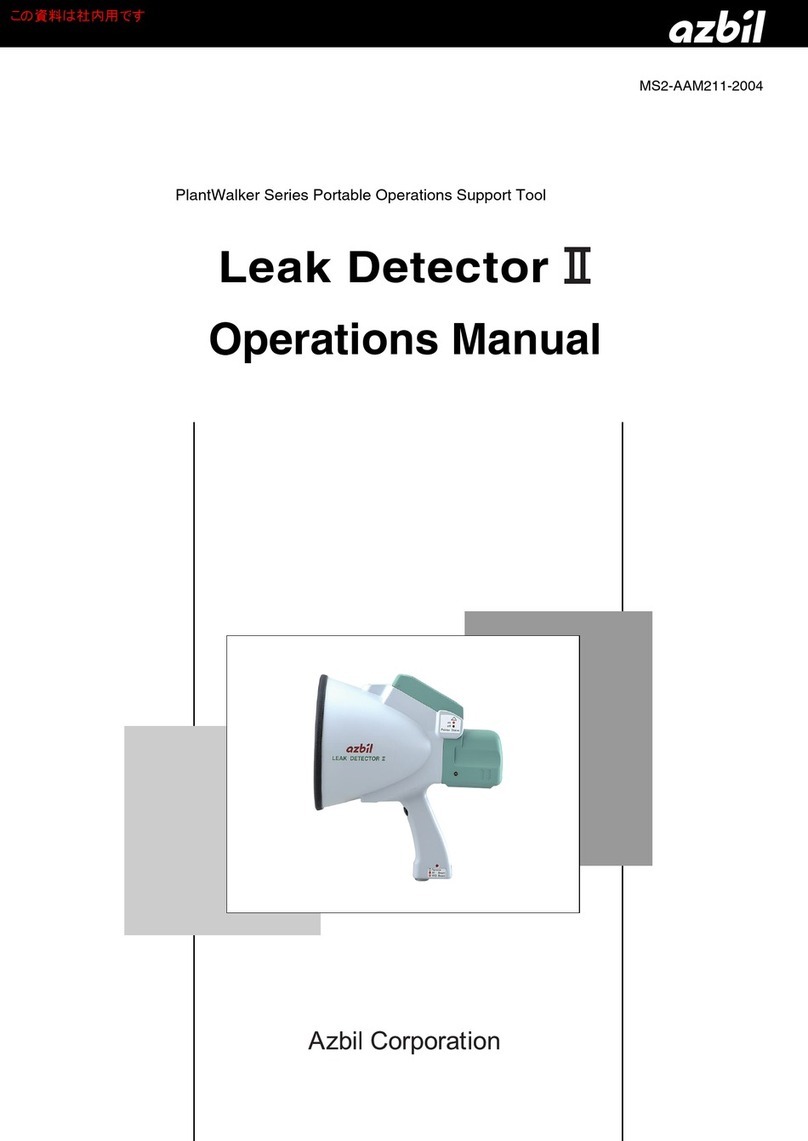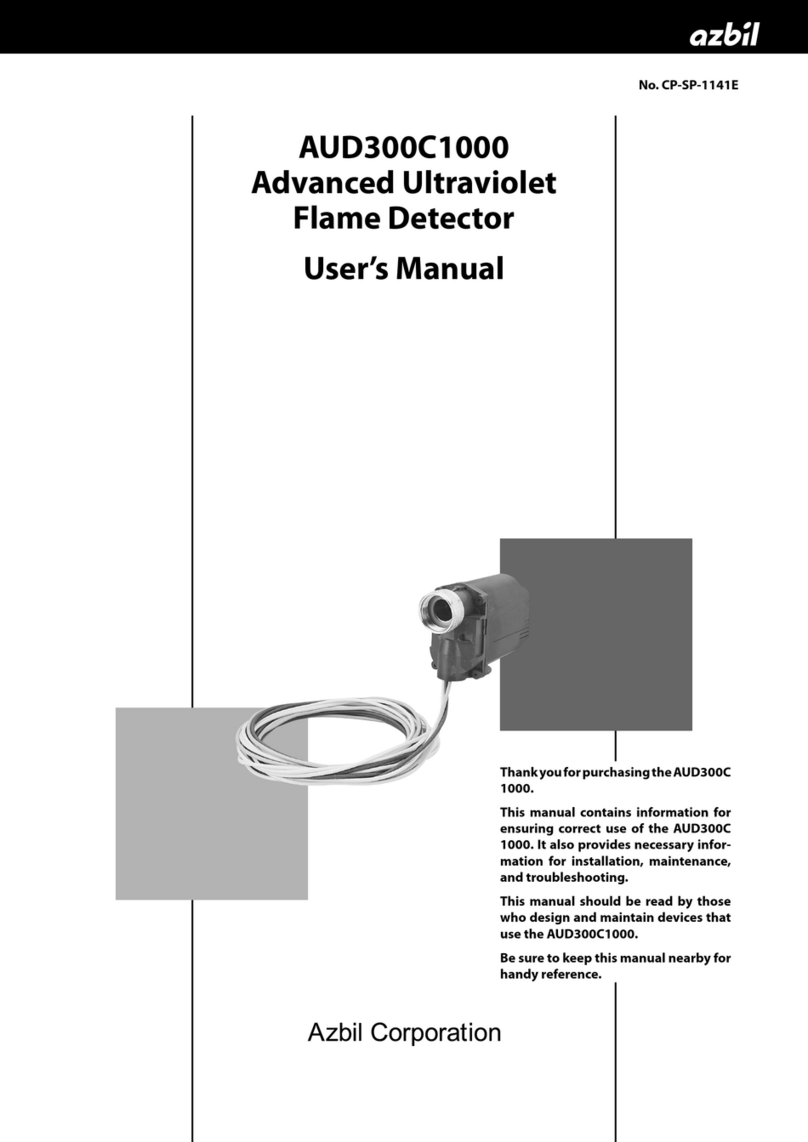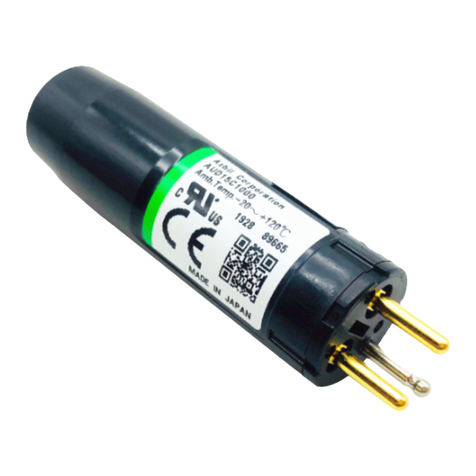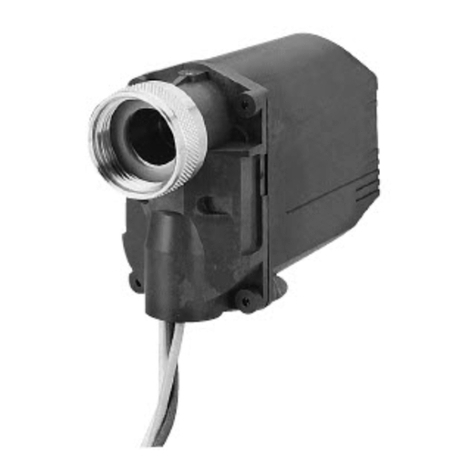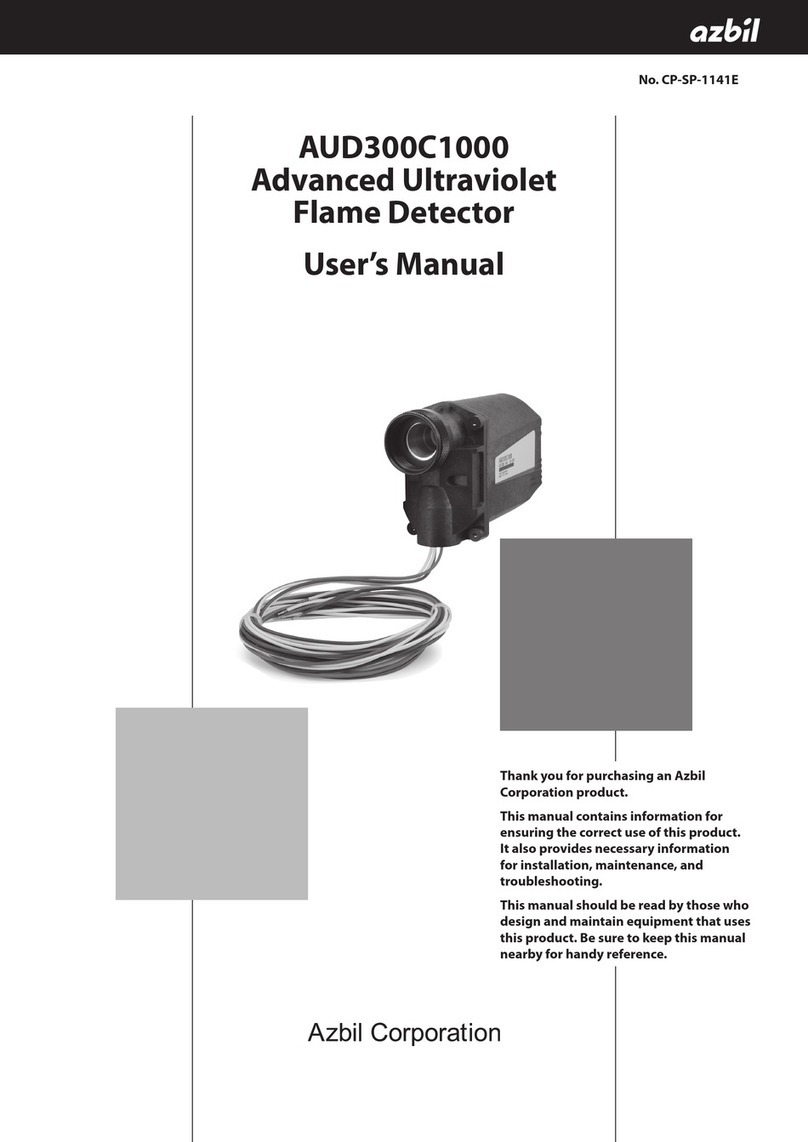
E4
●Size of monitoring pipe
For the detector to receive the optimal amount of UV radia-
tion, its eld of vision should be as wide as possible. To that
end, do the following:
(1) Use the widest monitoring pipe possible, at least 50 to 80A,
and connect the AUD100/110 with a reducer.
(2) Make the monitoring pipe as short as possible. (However, re-
member that the ambient temperature of the AUD100/110
should not exceed 120°C.)
●Mounting space
Leave sucient space to allow easy maintenance and inspection.
■Adjustment and inspection
Aer wiring, do the following checks.
(1) Using the FSP136A100 Analog Flame Meter
•Ifmeasuringtheamecurrent:
Insert the ame current measurement plug of the FSP136A100
into the ame current measurement jack of the burner
controller.
•Ifmeasuringtheamevoltage:
Connect the red and black ame voltage measurement probes
from the FSP136A100 to the + and - ame voltage output
terminals respectively on the burner controller.
(2) Check the operation of the AUD100/110 by exposing the
AUD15 to a lighter ame or to ultraviolet rays from an ultra-
violet lamp.
Handling Precautions
•Before using an open ame, check that there is no am-
mable gas in the vicinity.
(3) Mount the AUD100/110 on the monitoring pipe temporarily.
(4) Light the burner.
(5) To determine the optimal monitoring position, measure the
ame current/voltage with the FSP136A100 analog ame
meter while slowly moving the monitoring pipe. Select the
position with the highest possible stable ame current and
voltage which is also within the specied range for the burner
controller.
Fluctuation of the reading within the width of the indicator
needle is OK.
For the specied ame current and voltage range for the
burner controller, see the manual of the burner controller.
●Pilot burner turndown test
WARNING
If the ame detector is set so that it detects a pilot
ame that is too small to ignite the main ame, the
AUD100/110 will not be able to recognize (for ex-
ample) a ame failure in the main burner. In this case
fuel would continue to be supplied, causing a serious
explosion hazard. To prevent this, be sure to do the
pilot turndown test carefully.
If it is necessary to do this test repeatedly, completely
shut down all equipment each time the test is nished,
and completely discharge unburned gas or oil that has
accumulated in the ducts and combustion chamber.
If unburned gas or oil is not expelled completely, an
explosion may occur.
CAUTION
This test should be done only by a trained and experi-
enced professional.
e purpose of this test is to determine whether, under the least fa-
vorable conditions of gas pressure and air pressure, a pilot ame de-
tected by the ame detector will reliably light the main burner. For the
procedure of the pilot turndown test, follow the instructions in the
burner controller manual or equipment manufacturer manual.
●Ignition spark response test
WARNING
Make sure that this device does not detect ultraviolet
rays other than those of the burner ame. If it does, a
false ame signal will endanger combustion safety.
Make sure that the ame relay (normally relay 2K) is not af-
fected by the spark generated by the ignition transformer.
is test examines whether this device responds to ultraviolet
rays of the ignition transformer.
For the procedure of the ignition spark response test, follow
the instructions in the burner controller manual or equipment
manufacturer manual.
■Final mounting of the monitoring pipe
•When the equipment is operating properly with the specied
ame voltage output aer all adjustments have been completed,
turn OFF the power to the equipment, remove the AUD15 and
AUD100/110, and weld the monitoring pipe permanently.
•Mount the AUD15 and AUD100/110 on the monitoring pipe
and do all of the wiring.
•Asaguidelineformounting,tightenthenut1quarterturnaer
contacting the edge of the mounting pipe and the packing for
the nut. en, check the tightness, include the welding part of
the mounting pipe using a tightness test, etc.
■Label attachment
Attach the eective operation time label to a place where it can be
seen easily. Attach the expiration date label to the socket.
■Final inspection
To ensure proper burner control, do a trial run of at least one
complete operation cycle of the combustion equipment to verify
that all control operations function correctly.
MAINTENANCE AND INSPECTION
CAUTION
The eective operating life of the AUD15 is a total of
25,000 hours of use or 5 years after the date of inspec-
tion by Azbil Corporation.
Take special care in handling the AUD15 to avoid
impact and shock.
When transporting or storing the AUD15, be sure to
put it in a secure packing box.
■Maintenance and inspection work for the AUD15 and
AUD100/110
●Flame failure test
To check that the ame safeguard control device works prop-
erly, do the ame failure test regularly.
During normal burner combustion, block the monitoring pipe
window so that there is no ame signal, or else cut o the fuel
at the source to extinguish the burner ame. Check that the
ame failure is detected and that the main valve and pilot valve
are closed.
●Flame signal check
Regularly check the ame signal from the burner controller
that is used for batch operation. For the method of checking,
see the user’s manual for the burner controller.

